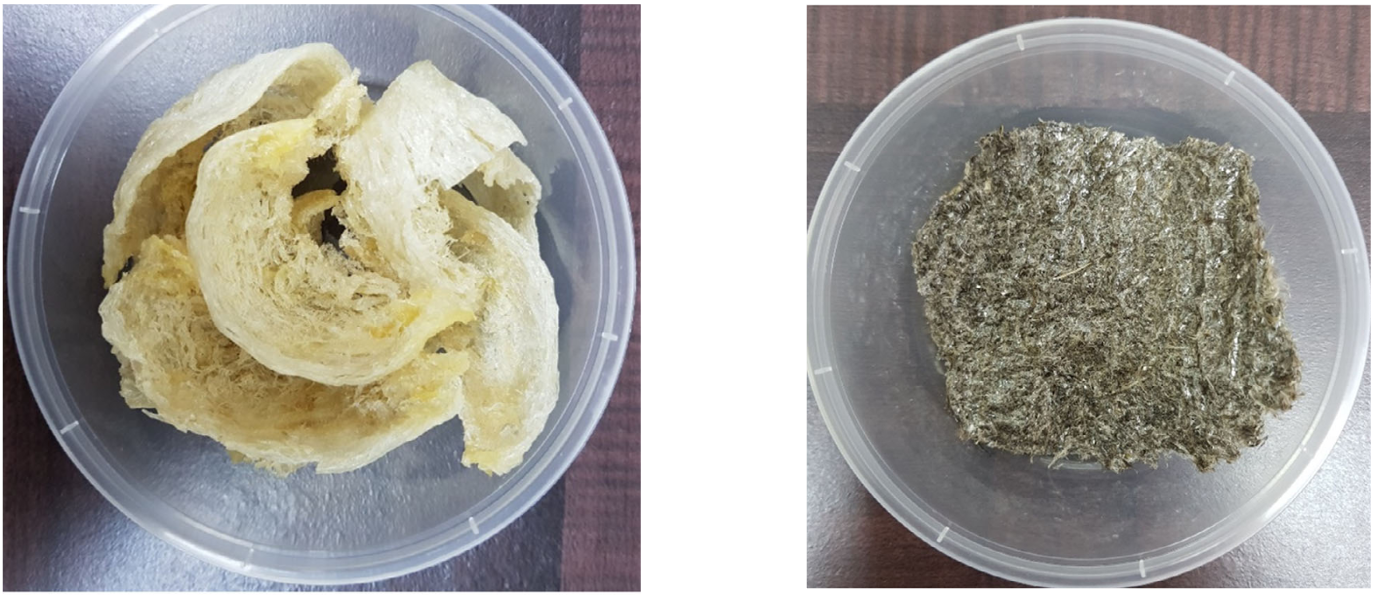Novel sialidases for enzymatic recovery of sialic acid from edible bird's nest (EBN) co-products
PRINCIPAL INVESTIGATOR: Dietmar HALTRICH
Background.
Edible bird's nest (EBN), made from swiftlet's saliva, is usually harvested from caves or farmhouses and undergoes a cleaning process before being produced into a highly priced edible form (Ibrahim Khushairay et al., 2014). Studies have shown that EBN possesses high therapeutic value, e.g., antioxidant properties, antihypertensive effect, bone strength improvement, and cell proliferation induction (Ghassem et al., 2017; Matsukawa et al., 2011; Nurfatin et al., 2016; Zainal Abidin et al., 2011). Therefore, EBN is known not only as a food supplement but can be applied as a pharmaceutical product as well. The major components in EBN are proteins (62–63%), carbohydrates (25.6–27.8%), a low amount of lipid (0.14–1.28%) and ash (2.1%) (Marcone; 2005). The major carbohydrates in EBN are sialic acid, galactosamine, glucosamine, galactose and fucose. Sialic acid, specifically N-acetylneuraminic acid, was reported to facilitate the development of infant brain functions, improve immune function, and prevent infection of virus (Colombo et al., 2003).
Raw unprocessed EBN contains as much as 90–95% edible parts and 5–10% feathers and dirt (Ibrahim Khushairay et al., 2014). During the processing of the EBN relatively large amounts of EBN co-products accumulate, mainly feathers and valuable glycoproteins, and are disposed as waste without further treatment, which is a considerable loss of value. Recovery of these highly valuable substances from EBN processing co-products is advantageous not only for the environment but also for sustainable economics.

Figure 1. Processed clean EBN (left); EBN co-products (right) (taken from Ling et al., 2020)
Aims and methods.
The proposed project aims: (i) to investigate the naturally occurring diversity of exo α-sialidases using the sequence information that is currently available on protein databases and to identify the exo α-sialidase sequence space specific for the cleavage of glycosidic linkages of neuraminic acids; (ii) to discover novel exo α-sialidases for the enzymatic hydrolysis of α-2,3-, α-2,6-, or α-2,8- glycosidic linkages of terminal sialic acid residues in EBN glycoproteins co-products for the recovery of sialic acid; (iii) to identify the function roles of the key residues in the active sites and to investigate transglycosylation activities and the extent of glycosyl transfer of one or two promising enzymes; (iv) to exploit novel exo α-sialidases for the synthesis of sialylated human milk oligosaccharides (HMOs).
A number of previously described GH33 exo α-sialidase sequences, which have their functionalities confirmed experimentally in literature, will be collected and used as queries for database searches on NCBI and UniProt. The resulting sequences will be used for the calculation of a sequence similarity network (SSN) of the exo α-sialidase family. Approximate phylogenetic trees will be calculated from the sequence selections extracted from the SSN for the selection of potentially interesting exo α-sialidase sequences. 10-20 sequences that are well distributed throughout the investigated sequence space will be chosen. Synthetic genes of the selected enzyme sequences will be purchased from a commercial supplier, cloned and overexpressed in Escherichia coli. The recombinant enzymes will be characterized pertaining to biochemical properties that are relevant to the application of the enzymes in biocatalytic transformation, i.e., enzymatic hydrolysis of sialic acid from EBN co-products.
In a second step, three-dimensional structures of one or two promising GH33 exo α-sialidases will be obtained. Based on the modeled structures, catalytically active residues and potential residues involved in transglycosylation will be identified from molecular docking. Rationally designed mutants will be generated based on structural modeling and characterized. Detailed investigations of the transglycosylation activities and the analysis of glycosyl transfer of the selected enzymes to the substrates such as lactose and different glycosyl acceptors for the formation of sialylated HMOs structures will be performed. The structures of sialylated HMOs will be analyzed and structurally elucidated.
Colombo JP, Garcia-Rodenas C, Guesry PR and Rey J, Potential effects of supplementation with amino acids, choline or sialic acid on cognitive development in young infants. Acta Paediatr 92:42–46 (2003).
Ghassem M, Arihara K, Mohammadi S, Sani NA and Babji AS, Identification of two novel antioxidant peptides from edible bird's nest (Aerodramus fuciphagus) protein hydrolysates. Food Funct 8:2046–2052 (2017).
Ibrahim Khushairay ES, Ayub MK and Babji AS, Effect of enzymatic hydrolysis of pancreatin and alcalase enzyme on some properties of edible bird's nest hydrolysate. AIP Conf Proc 1614:427–432 (2014).
Ling WA, Chang LS, Babji AS and Lim SJ, Recovery of value-added glycopeptides from edible bird's nest (EBN) co-products: enzymatic hydrolysis, physicochemical characteristics and bioactivity. J Sci Food Agric 100: 4714–4722 (2020).
Marcone MF, Characterization of the edible bird's nest the ‘caviar of the east’. Food Res Int 38:1125–1134 (2005).
Matsukawa N, Matsumoto M, Bukawa W, Chiji H, Nakayama K, Hara Het al., Improvement of bone strength and dermal thickness due todietary edible bird's nest extract in ovariectomized rats. Biosci Biotechnol Biochem 75:590–592 (2011).
Nurfatin MH, Etty Syarmila IK, Nur 'Aliah D, Zalifah MK, Babji AS and Ayob MK, Effect of enzymatic hydrolysis on angiotensin converting enzyme (ACE) inhibitory activity in swiftlet saliva. Int Food Res J 23:141–146 (2016).
Zainal Abidin F, Chua KH, Ng SL, Mohd Ramli ES, Lee TH and Abd GN, Effects of edible bird's nest (EBN) on cultured rabbit corneal keratocytes. BMC Complement Altern Med 11:1–10 (2011).
